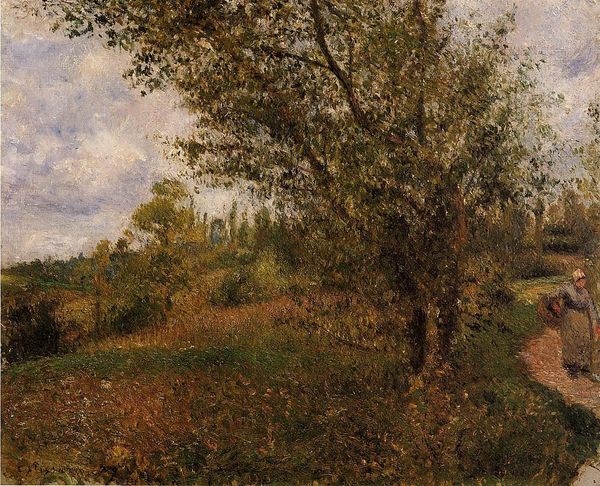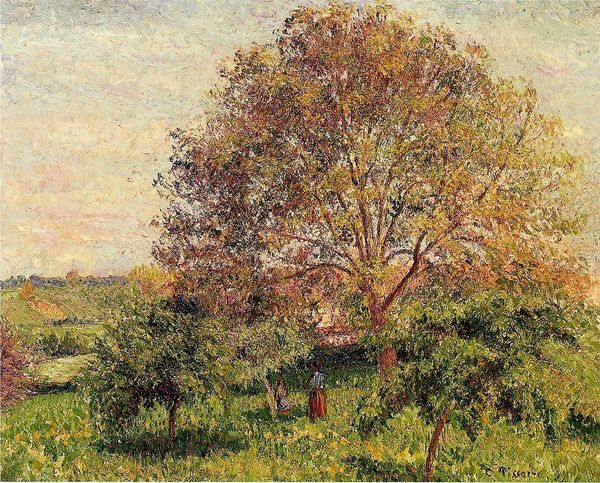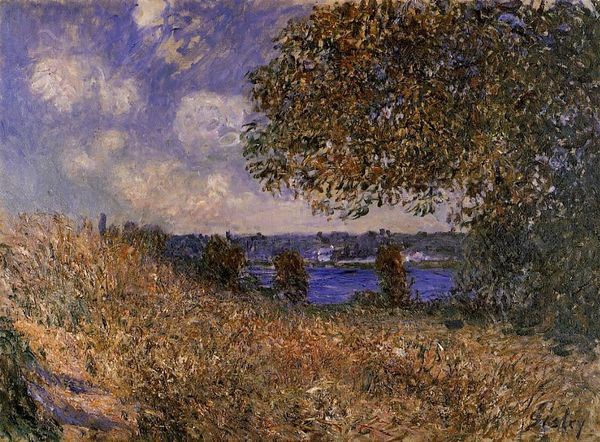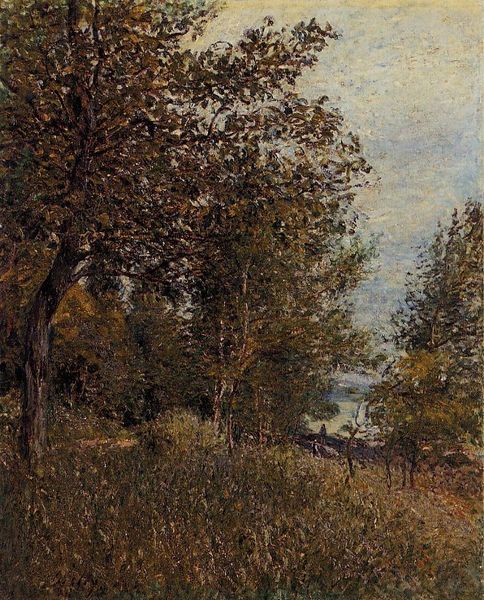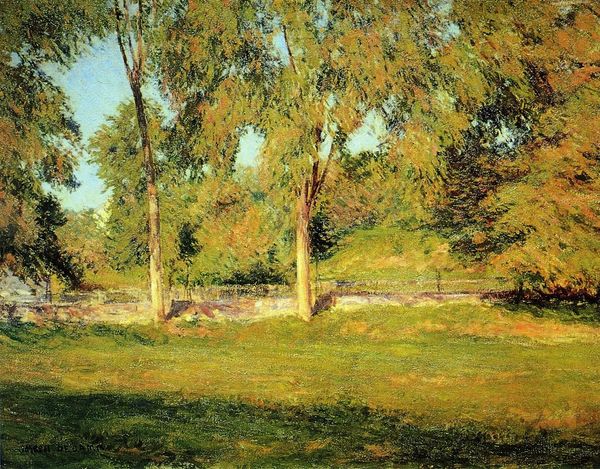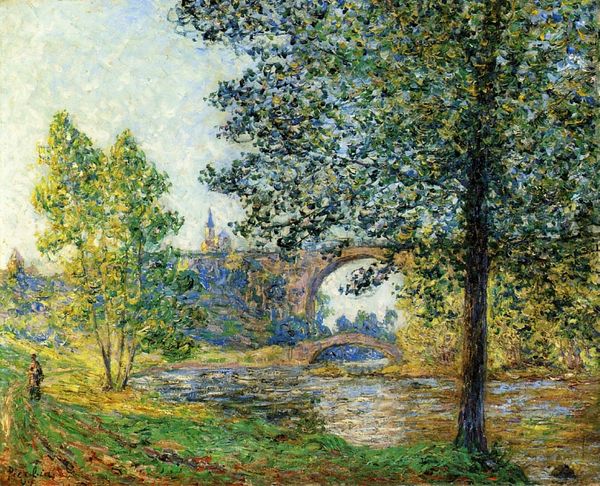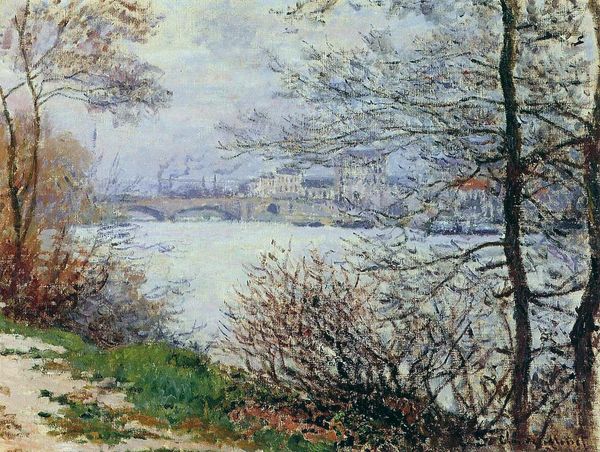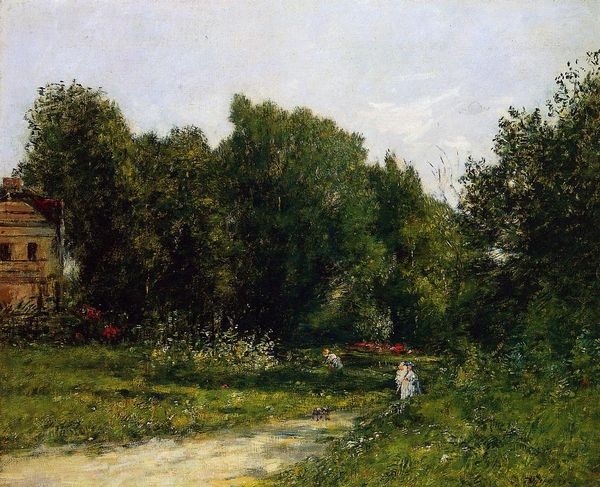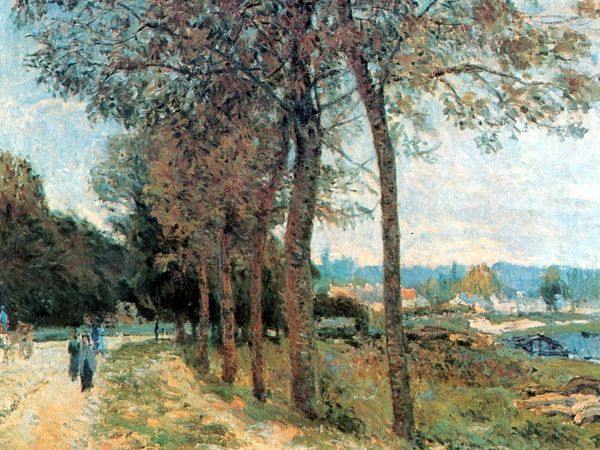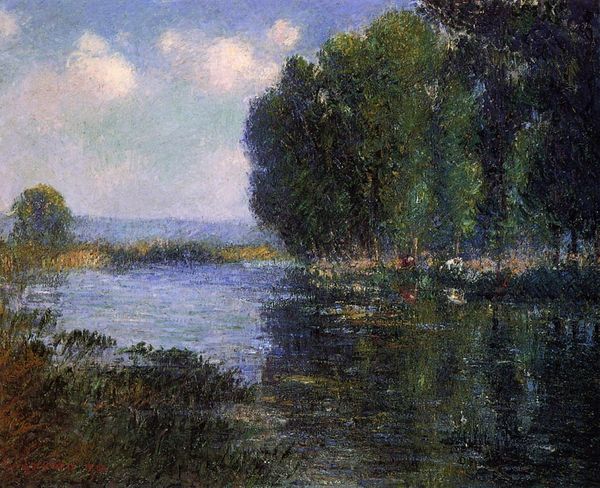
Copyright: Public domain
Curator: Standing before us is Willard Metcalf's "The Bower," painted in 1907. Metcalf was a prominent figure in the American Impressionist movement, and this piece exemplifies his mastery of plein-air painting and capturing fleeting moments of natural light. Editor: Wow, just gazing at it gives me this feeling of instant calm. The way the light filters through the leaves—it's almost like a dappled dream. Did people really lounge around in such peaceful places? It feels like a world away from… well, everything! Curator: The composition is indeed idyllic, embodying a longing for pastoral simplicity. It is key to note how "The Bower" emerged during a period marked by rapid industrialization and urbanization in the United States. Artists like Metcalf turned toward the landscape to reflect upon the value of nature. Editor: It does feel like an escape. I almost want to grab a blanket and curl up right there in that patch of sunlight near the trees. The scene also has a quiet intensity to it, like it wants me to reflect or to wander. What is hidden further in those greens? Curator: Interesting. While visually harmonious, the positioning of the bower within art historical narratives reveals it to be more than just an innocent vista. Throughout Western art, enclosed landscapes like this were typically coded as feminized spaces. Metcalf subtly participates in this aesthetic tradition of connecting nature, femininity, and themes of retreat. The figures barely discernible at the edge of the work seem to illustrate these ideas. Editor: Well, whether a reflection of feminine mystique or a pure slice of nature, there's something really universal about wanting to be hidden away, sheltered under the trees. It sort of suggests that even a slice of untamed wild, no matter how small, is all we need. Curator: It is worth acknowledging, also, how Metcalf's choice of an Impressionistic style underscores the transient, ever-changing nature of both landscape and identity. After all, the image captures just a split second, illuminated in his signature style. It invites considerations about fleeting, elusive, identities that refuse fixed definitions. Editor: Absolutely, the image makes me wonder: How often do we truly find ourselves "in the bower", lost in reverie, disconnected? Maybe art like this is an invitation to seek out those places, both real and imagined, more often. Curator: I'd say that our exchange suggests how, when considered through an intersectional, historical, and creative lens, a painting of a forest reveals profound, diverse implications that reach far beyond what initially meets the eye. Editor: Yeah, I'm pretty sure I will find a nice bower to visit in the nearby woods... or maybe just daydream of one for a moment, right now.
Comments
No comments
Be the first to comment and join the conversation on the ultimate creative platform.
